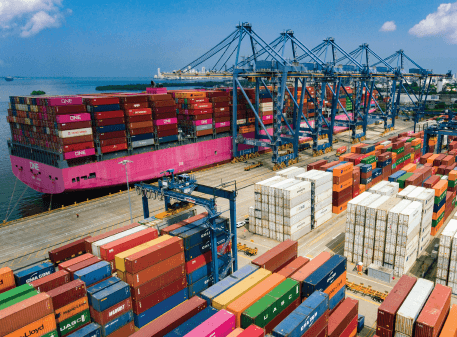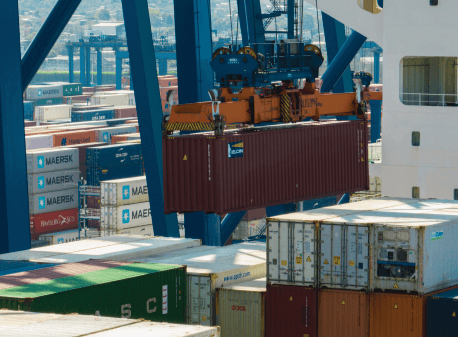Located in one of Colombia's main industrial zones, and with a clear focus on exports, the Contecar maritime terminal is the ideal platform for competitive access to international trade markets, products, and services.
Under the Development Plan that began in 2008, Contecar has the capacity to mobilize 3.2 million TEUs per year.
The Port of Cartagena Group has the capacity to move 5.2 million TEUs annually, aiming to position Cartagena among the 30 most important ports in the world.
As a result, Contecar is positioning itself as the ideal Caribbean port platform for the connectivity and competitiveness required in the 21st century.
Key data
- It is prepared to receive the largest ships in the world.
- It has the capacity to move 3.2 million TEUs annually.
- It functions as a hub for shipping companies and as an International Logistics Distribution Center (ILDC) for multinationals.
- It boasts state-of-the-art infrastructure and equipment to offer the highest quality services.
- It has the infrastructure to move Ro-Ro cargo and specializes in automobile cargo for the national and regional markets.
- It also handles project loads: heavy or oversized parts.
- It is directly connected to global trade networks, which means reduced time and costs.
- With its Port and Logistics Training Center, the only one of its kind in Latin America, the training provided to its employees sets it apart in the provision of port and logistics services.
Sustained growth
The maritime terminals are expanding their capacity—they are now ready to receive the world's largest ships and have the capacity to handle 5.2 million TEUs annually.


Logistics and port training center
Its qualified and competent team is what sets the Port of Cartagena Group apart.
To proactively contribute to the development of the Caribbean region and Colombia, the organization must remain at the forefront. Only exceptional people will achieve exceptional levels of efficiency, and in this process, the port knows that it is essential to train those working in the value chain of the local port and logistics industry.
That is why it developed the Logistics and Port Training Center, whose academic programs have been structured with practical criteria based on accumulated experience and continuous organizational learning.
During the creation process, the organization strategically partnered with the STC BV of the Netherlands, the European leader in port and maritime training.
This School has five fundamental elements:
- Gantry crane and RTG simulator for port equipment operation.
- Working laboratory for the maintenance area.
- Port software simulation.
- Emergency mitigation training.
- Technical training in warehousing and port logistics.
One of a kind in Latin America
The RTG and gantry crane simulator was built in Västeras, Sweden and is a sophisticated teaching tool that is one of a kind in Latin America. It is equipped with the necessary systems to virtually recreate a port operation, with the most modern, largest, and most efficient cranes in the global maritime industry.

